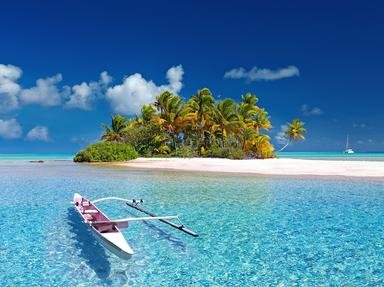Quiz Answer Key and Fun Facts
1. How far is Rockall from the nearest land?
2. How high is Rockall (in feet/metres)?
3. When was the first recorded landing on Rockall?
4. Which of these countries has formally claimed Rockall?
5. The name 'Rockall' is mentioned every day on BBC radio. In what connection is this?
6. Rockall has been mentioned in fiction. In which of these novels does it appear?
7. Excluding birds, how many species of animal have been found on Rockall?
8. With which activity is Rockall mainly associated?
9. Only one feature on the islet has a name, a rocky ledge near the summit. After whom is it called?
10. In sightings of Rockall in the past it has sometimes been mistaken for what?
Source: Author
Charlesw321
This quiz was reviewed by FunTrivia editor
spanishliz before going online.
Any errors found in FunTrivia content are routinely corrected through our feedback system.

